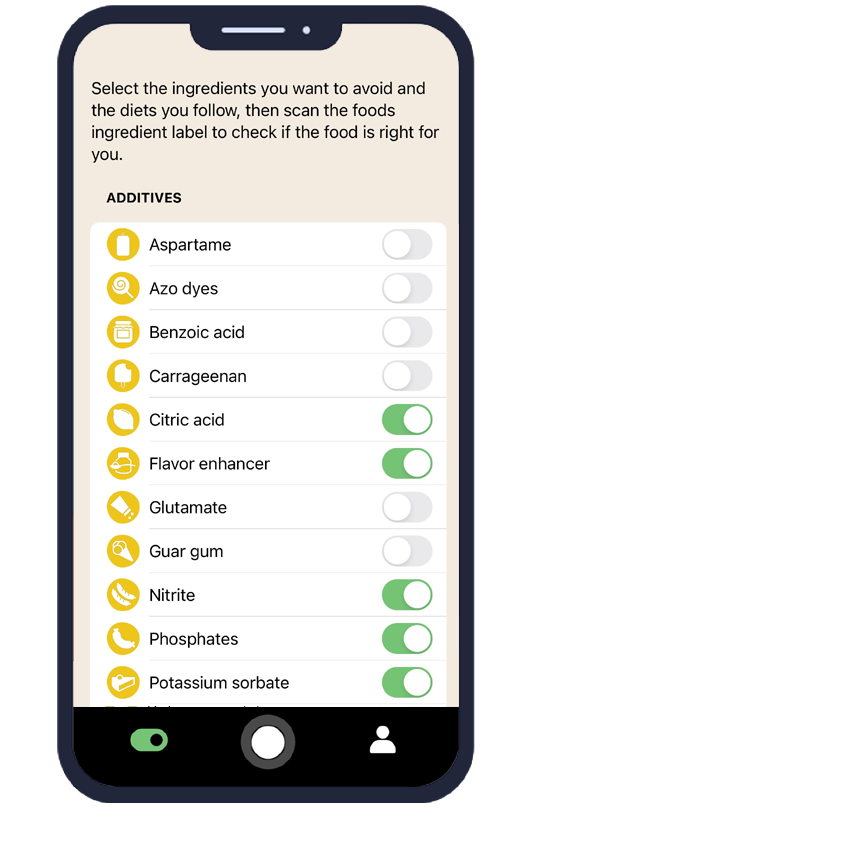Everything You Need to Know About Almond Allergens and How AI Eat This Can Help
Almond is one of the most common tree nut allergens found in countless food products worldwide. For millions of people with nut allergies or dietary restrictions, identifying Almond in ingredient lists can be challenging and potentially dangerous. The AI Eat This mobile app revolutionizes food safety by instantly scanning ingredient lists in any language, helping users quickly identify and avoid Almond-containing products for safer, more confident eating.
What Is Almond and Where Is It Used in Food Products?
Almond refers to the edible seed of the Prunus dulcis tree, commonly used as both a whole food and processed ingredient. In the food industry, Almond appears in various forms including whole nuts, flour, oil, extract, and protein powder. Food manufacturers must clearly label Almond as it's recognized as one of the major food allergens by regulatory authorities worldwide.
The versatility of Almond makes it a popular ingredient across numerous food categories. From obvious sources like trail mixes and granola bars to unexpected places like flavored beverages and processed meats, Almond can appear where consumers least expect it.
Common Foods Containing Almond
Understanding where Almond commonly appears helps consumers make informed choices:
- Baked goods including cookies, cakes, and pastries
- Breakfast cereals and granola products
- Dairy alternatives like almond milk and yogurt
- Chocolate and confectionery items
- Protein bars and nutritional supplements
- Flavored beverages and smoothies
- Processed meats and sausages (as binding agents)
- Salad dressings and marinades
Is Almond Safe? Understanding Almond Safety and Regulations
For most people, Almond is perfectly safe and provides beneficial nutrients including healthy fats, protein, and vitamin E. However, regulatory authorities like the FDA, EFSA, and WHO recognize tree nuts, including Almond, as major allergens requiring mandatory labeling.
Regulatory Approvals and Safety Guidelines
The FDA requires clear labeling of tree nuts including Almond on all packaged foods sold in the United States. Similar regulations exist globally, with the EFSA providing comprehensive guidelines for allergen management in Europe. These food additives regulations ensure consumers can identify potential allergens and make safe dietary choices.
Risks for Specific Groups
While generally safe, Almond poses significant risks for certain individuals. People with tree nut allergies may experience severe reactions ranging from mild symptoms to life-threatening anaphylaxis. Additionally, those following specific dietary restrictions for religious, cultural, or health reasons may need to avoid Almond-containing products.
How AI Eat This Helps You Avoid Almond in Your Diet
The AI Eat This app transforms how consumers identify Almond in food products through advanced ingredient scanning technology. Simply point your phone's camera at any ingredient list, and the app instantly identifies Almond and other allergens, regardless of the language or format used on the packaging.
Users can set personalized filters based on their specific dietary restrictions, including Almond allergy or intolerance. The app maintains a comprehensive database of Almond's alternative names and forms, ensuring nothing slips through undetected. This technology is particularly valuable when shopping for imported products or foods with ingredient lists in foreign languages.
The app's user-friendly interface makes it accessible for people of all ages, from parents shopping for children with Almond allergies to adults managing their own dietary restrictions. Real-time scanning eliminates guesswork and provides instant peace of mind while grocery shopping or dining out.
Who Should Avoid Almond? Understanding Risk Groups
Several groups should exercise caution or completely avoid Almond consumption. Individuals with diagnosed tree nut allergies represent the highest risk group, as even trace amounts of Almond can trigger severe allergic reactions. Cross-contamination during food processing means that products not containing Almond as an ingredient may still pose risks.
People with oral allergy syndrome may experience mouth tingling or throat irritation when consuming Almond, particularly if they're also allergic to certain pollens. Additionally, those following elimination diets or managing autoimmune conditions may temporarily avoid Almond as part of their dietary restrictions.
Parents of children with food allergies must be particularly vigilant, as accidental exposure to Almond in school lunches or social settings can have serious consequences. Understanding how to identify Almond in various food products becomes crucial for maintaining safety.
Practical Tips for Maintaining an Almond-Free Diet
Successfully avoiding Almond requires vigilance and practical strategies. Always read ingredient labels carefully, paying attention to allergen warnings and "may contain" statements. When dining out, communicate clearly with restaurant staff about Almond allergies and ask about ingredient lists and preparation methods.
Focus on whole, unprocessed foods when possible, as these naturally contain fewer hidden allergens. When purchasing packaged foods, look for products specifically labeled as "tree nut-free" or manufactured in dedicated facilities. Keep emergency medications readily available if you have severe Almond allergy.
Utilize technology like AI Eat This to streamline the identification process and reduce the risk of accidental exposure. The app's ability to scan ingredients in multiple languages is particularly valuable when traveling or purchasing international products.
Conclusion: Take Control of Your Diet with AI Eat This
Understanding Almond as a common allergen and knowing where it appears in food products is essential for anyone with dietary restrictions or food allergies. While regulatory authorities ensure proper labeling, the complexity of modern food production means consumers need reliable tools to identify potential allergens quickly and accurately.
The AI Eat This app provides an innovative solution for managing Almond avoidance, offering instant ingredient scanning and personalized filtering for safer eating experiences. Whether you're managing severe Almond allergy or following specific dietary restrictions, this technology empowers you to make confident food choices.
Don't let uncertainty about food ingredients compromise your health or peace of mind. Download AI Eat This for free testing today and experience how technology can simplify allergen management while keeping you safe from unwanted Almond exposure!

70 filters
With over 70 filters, you can easily avoid certain ingredients and follow your dietary preference.

Paleo

Pescetarian

Ultra-processed food

Vegan







































































